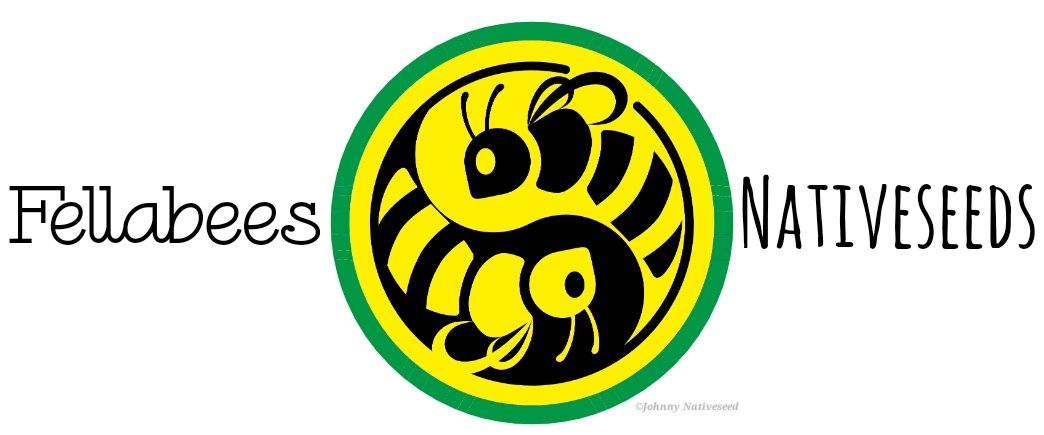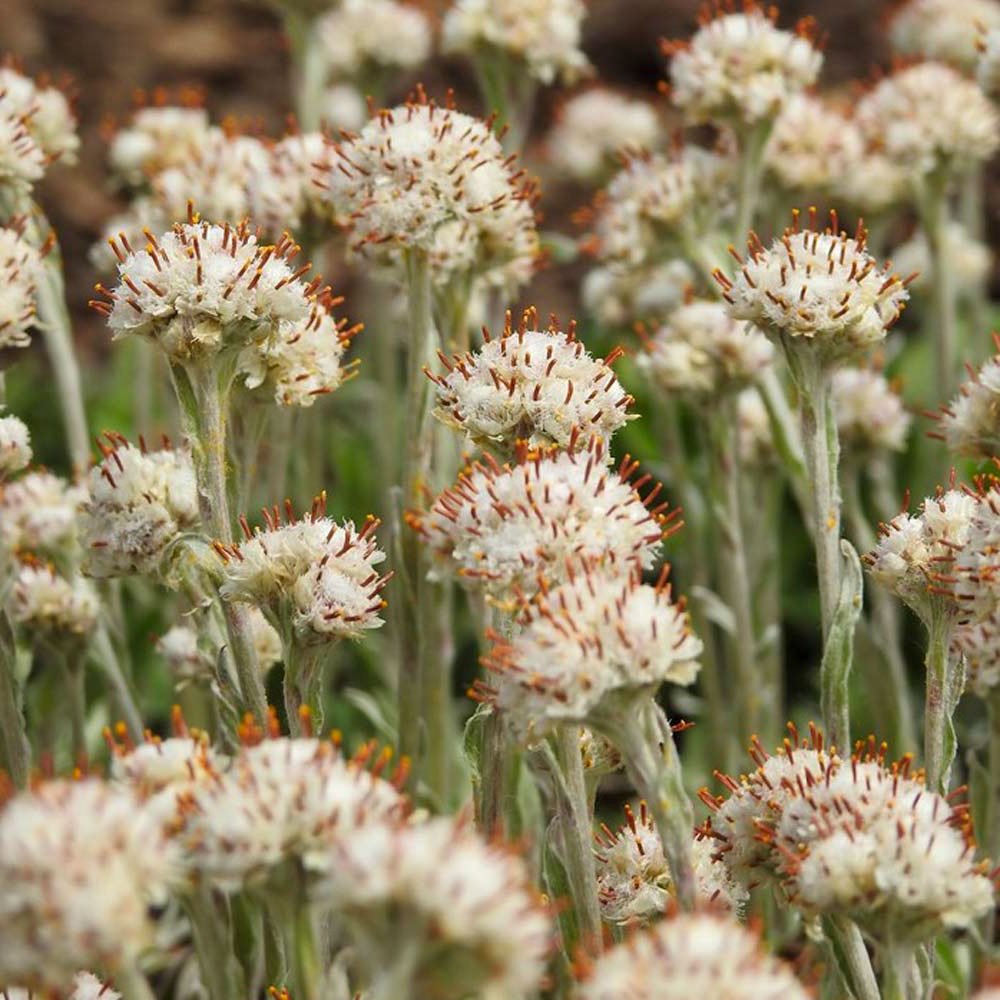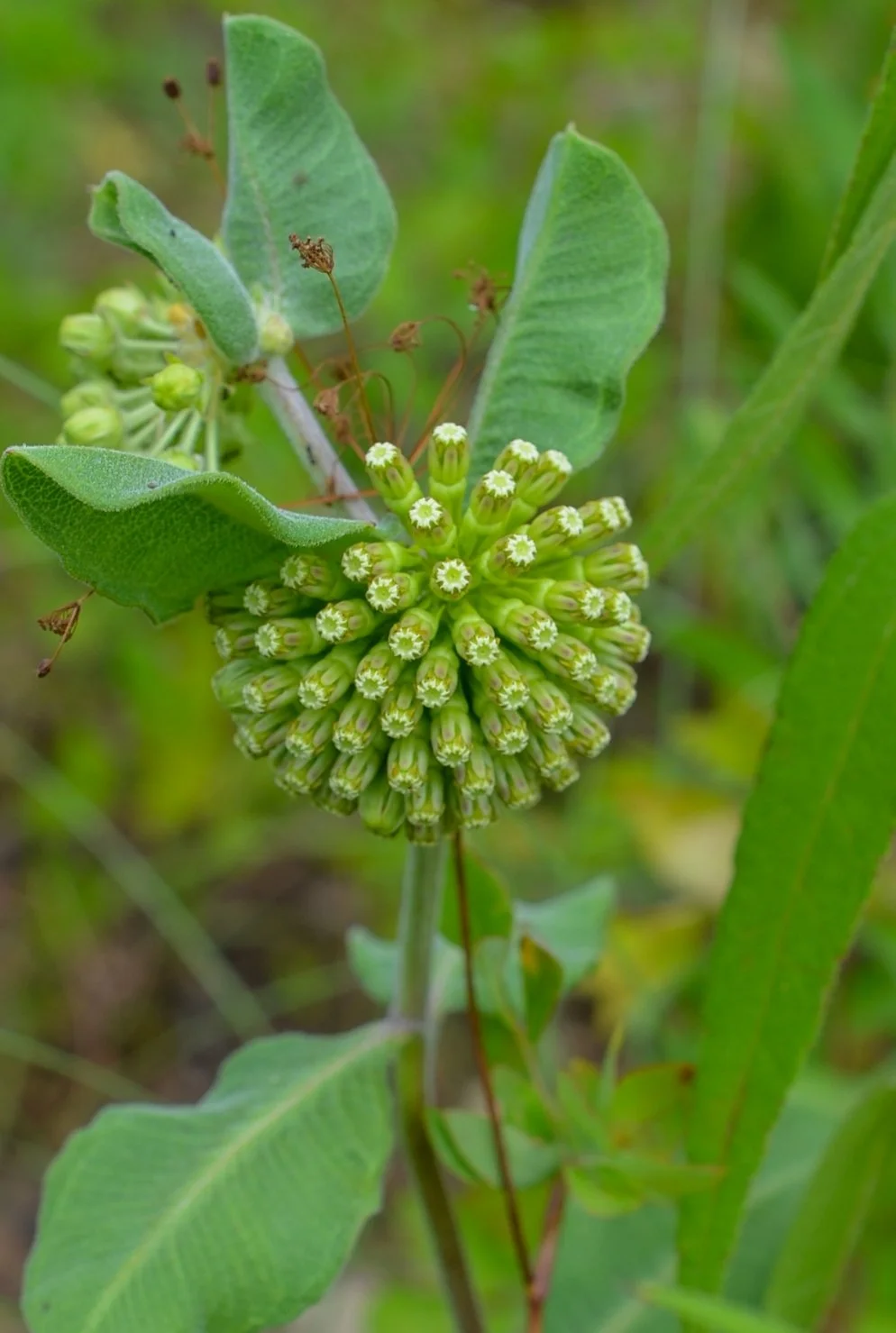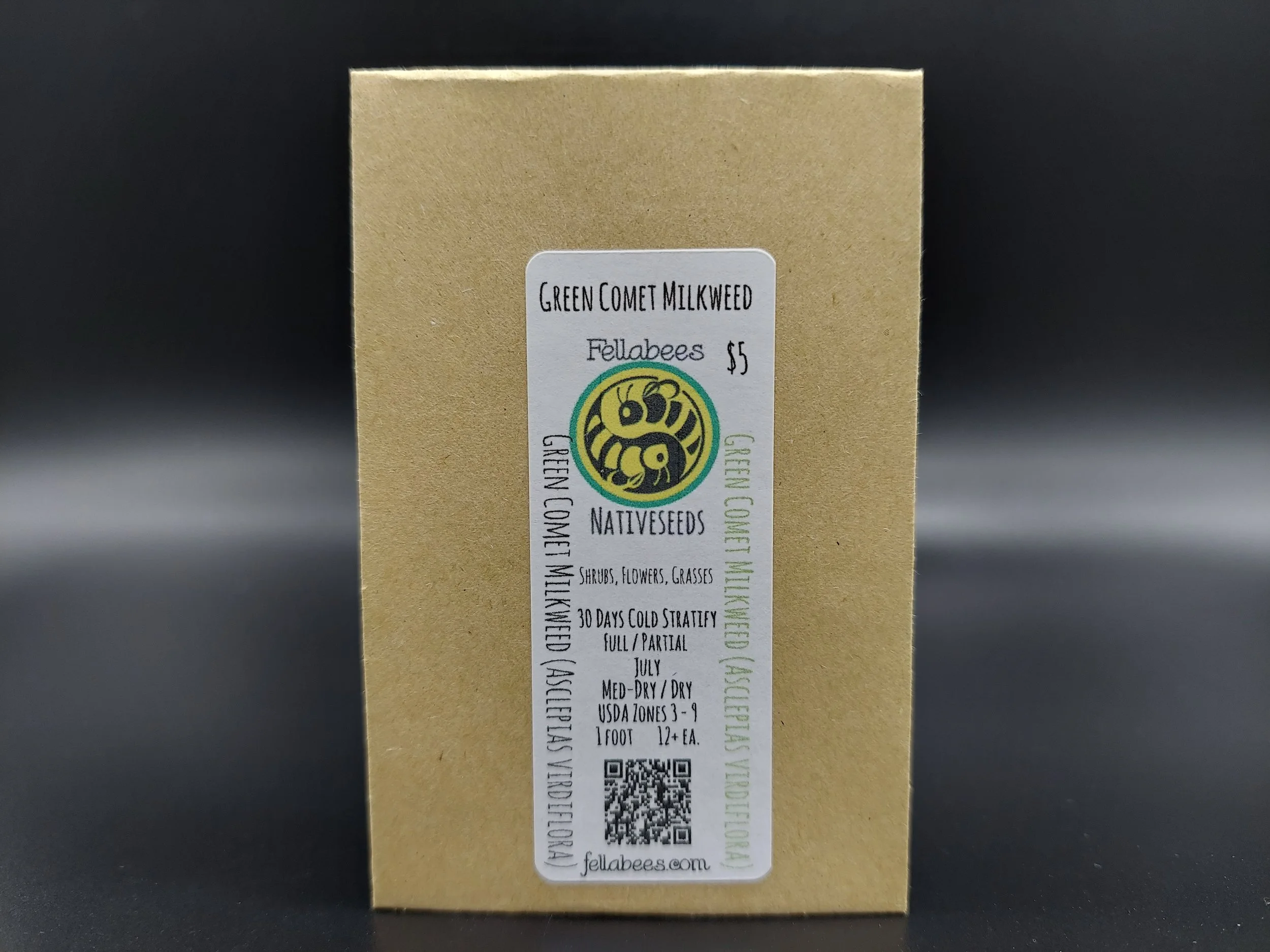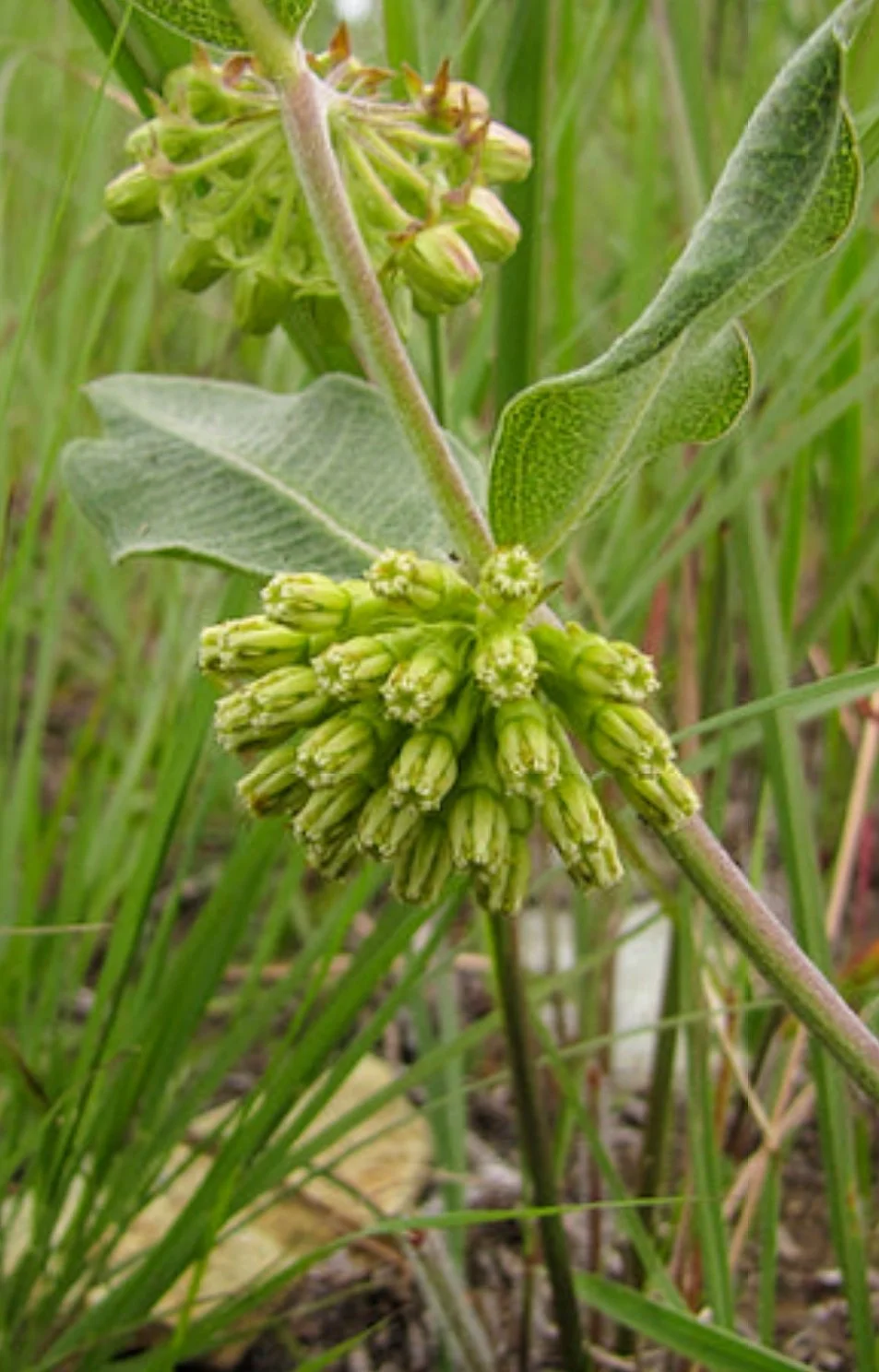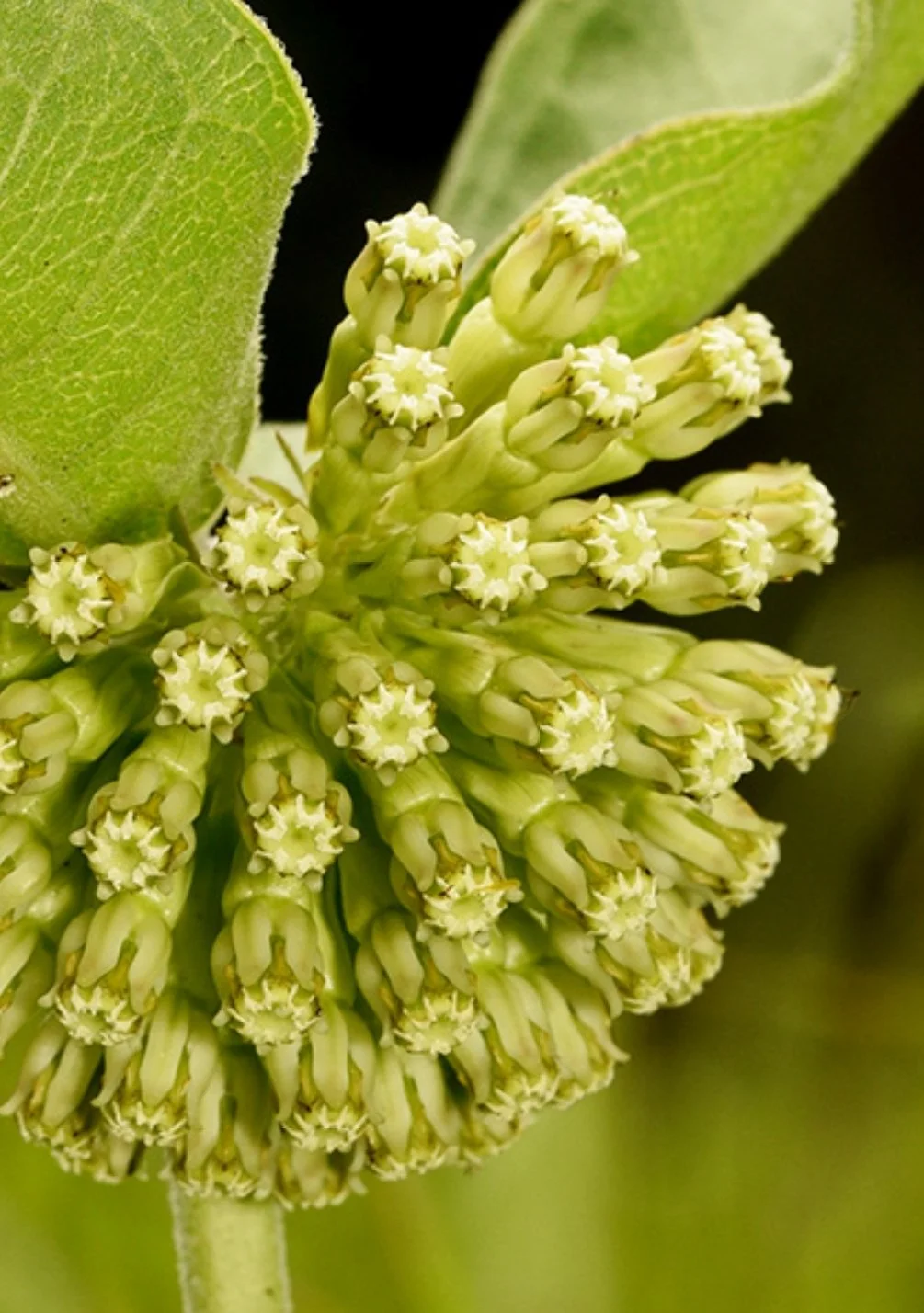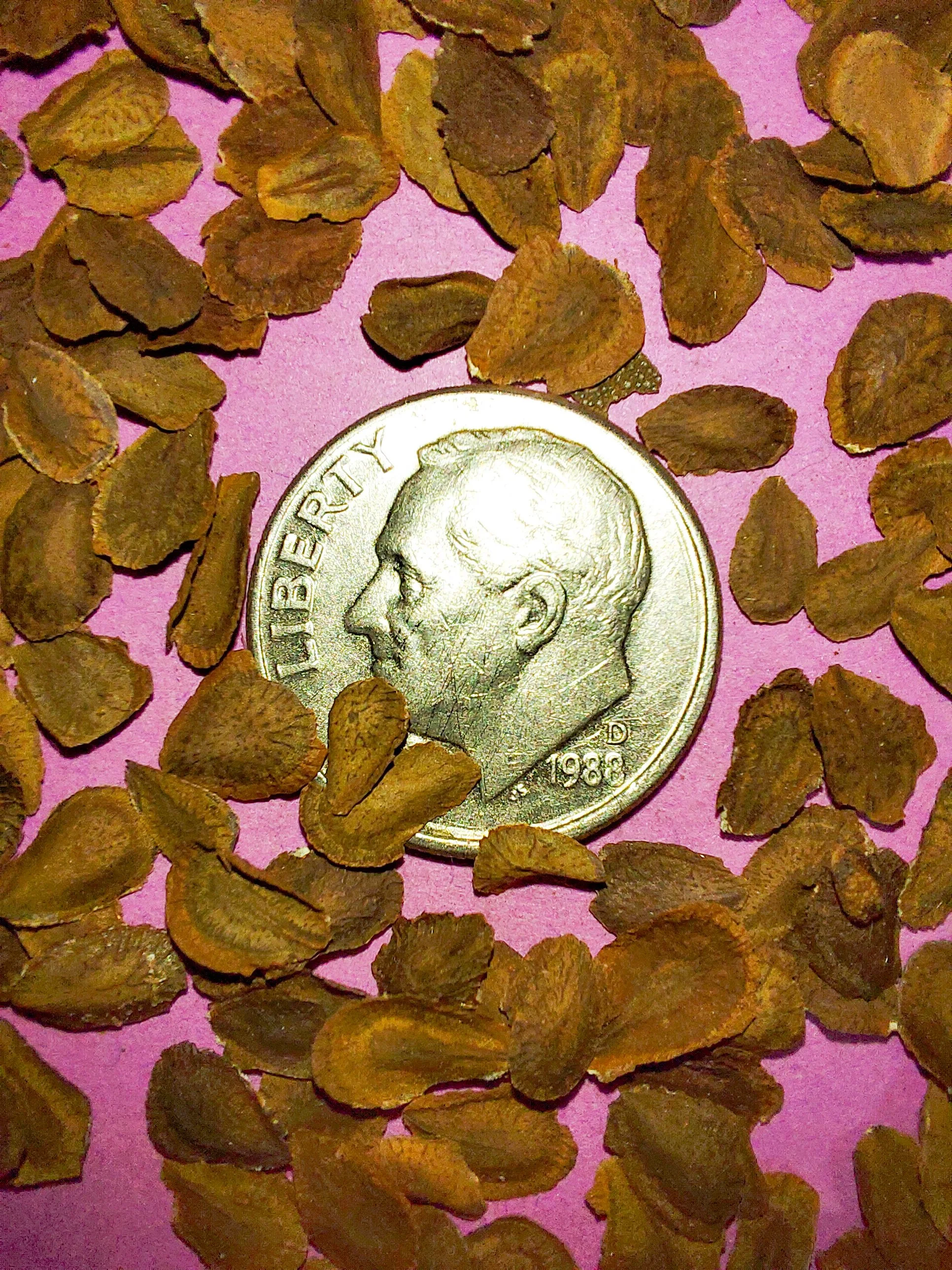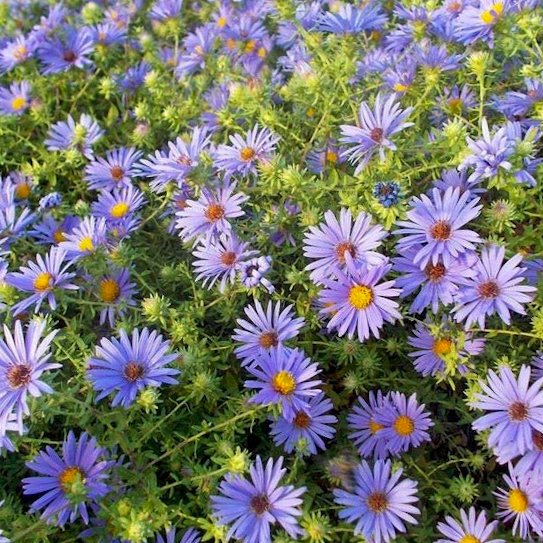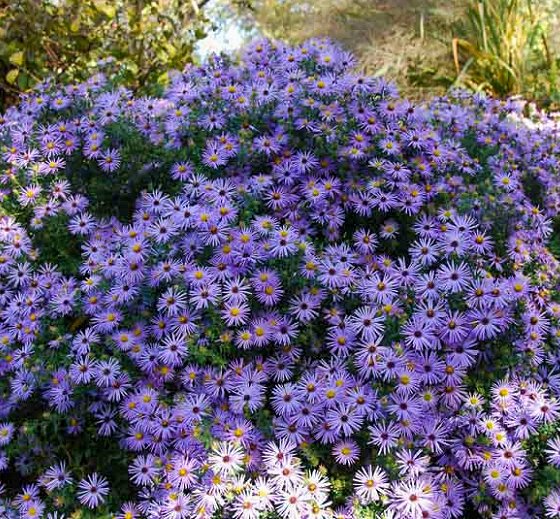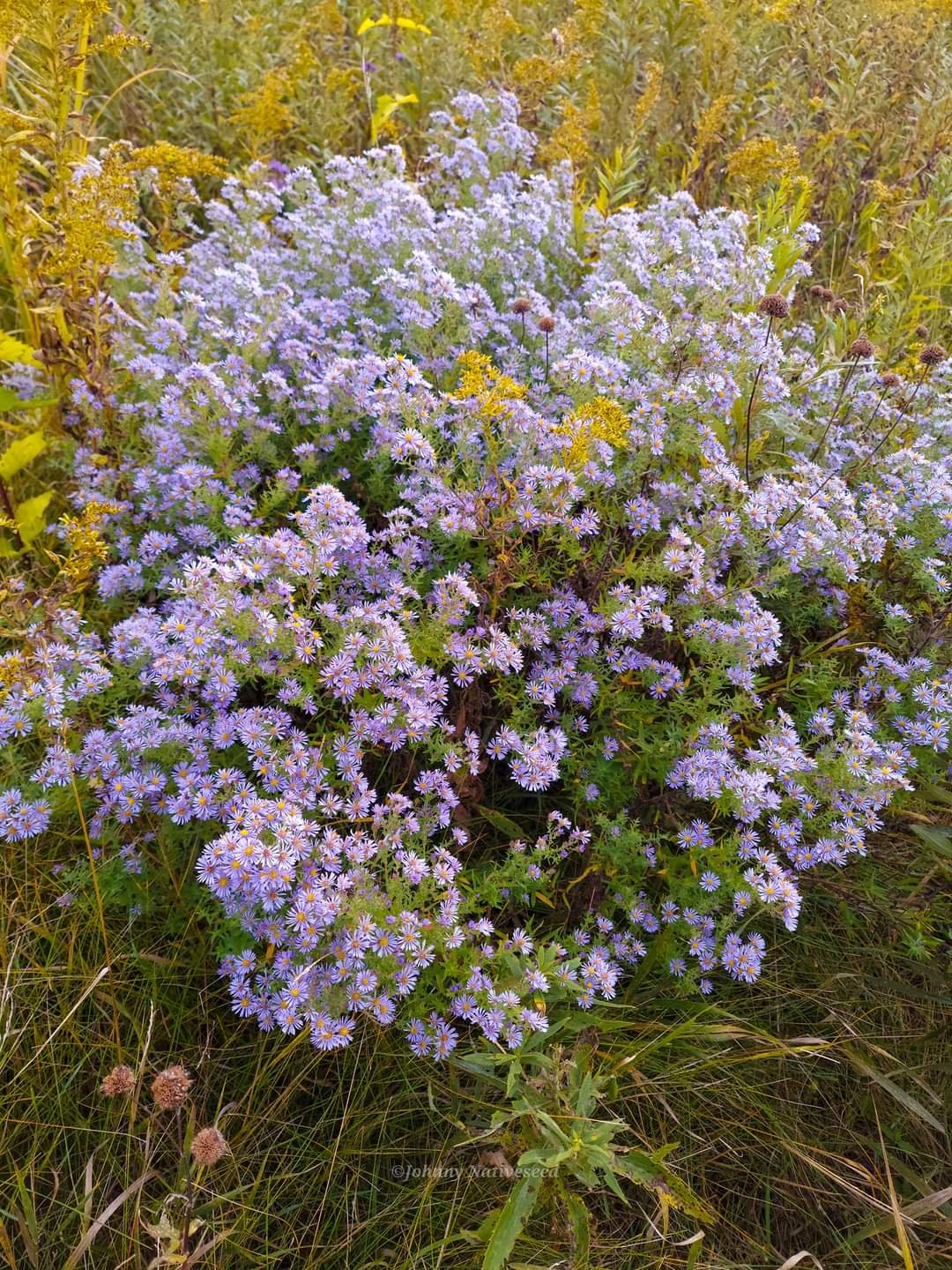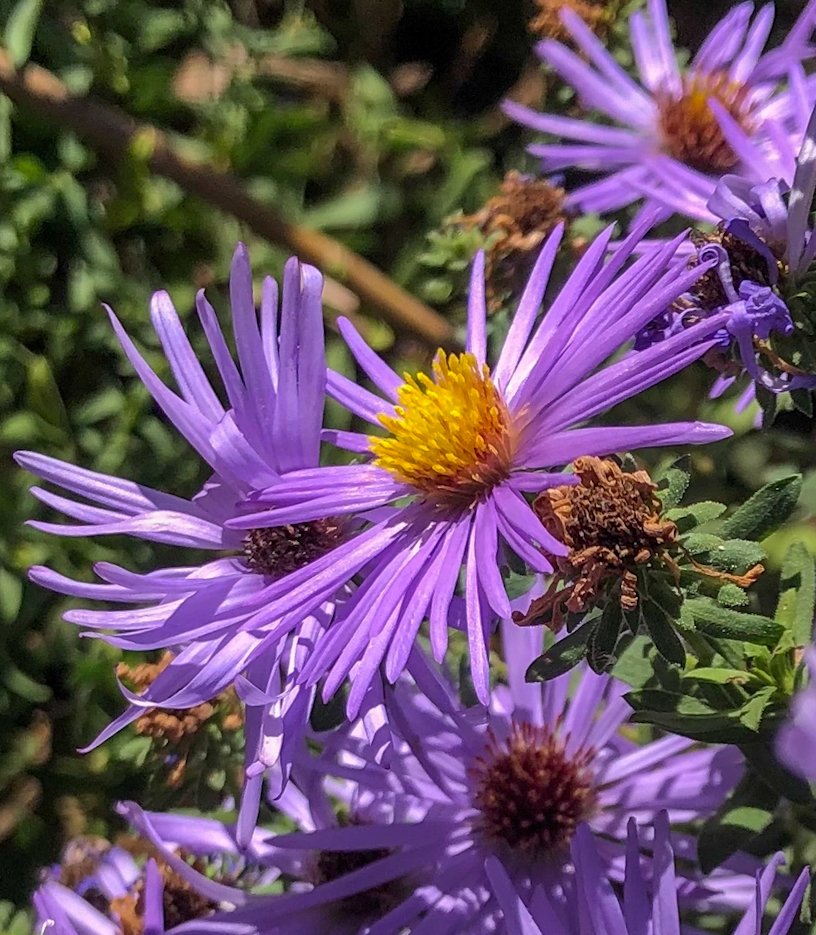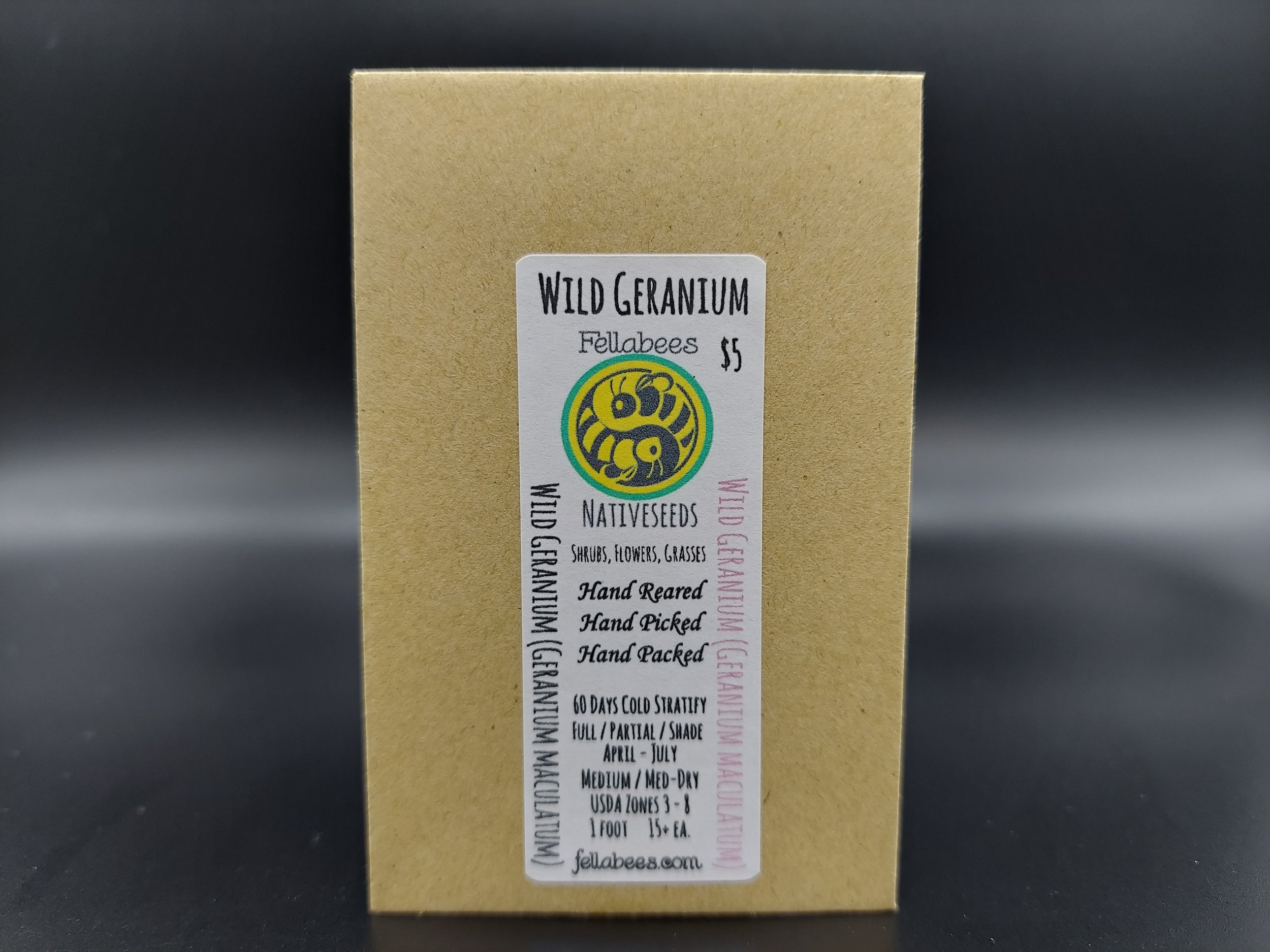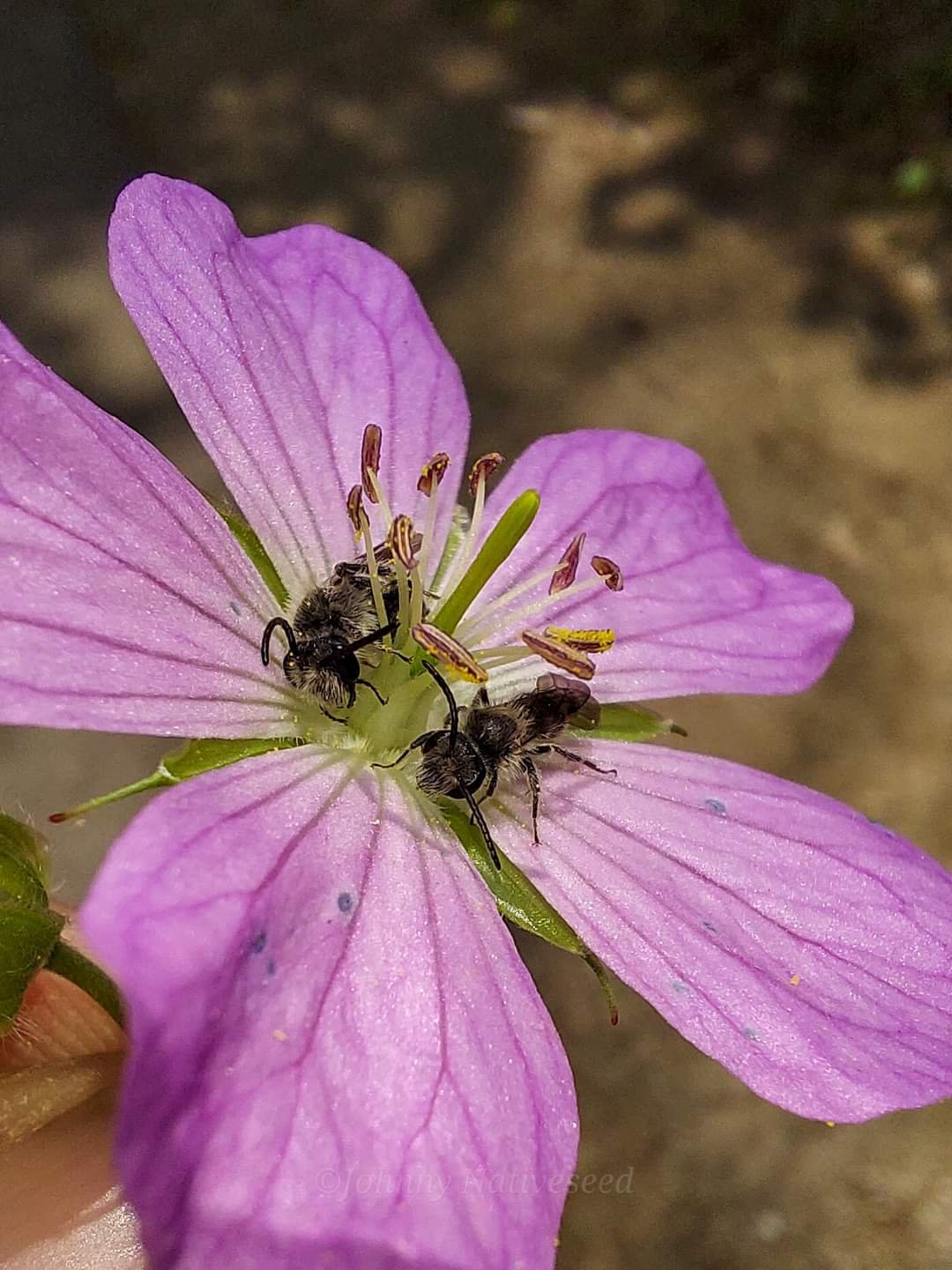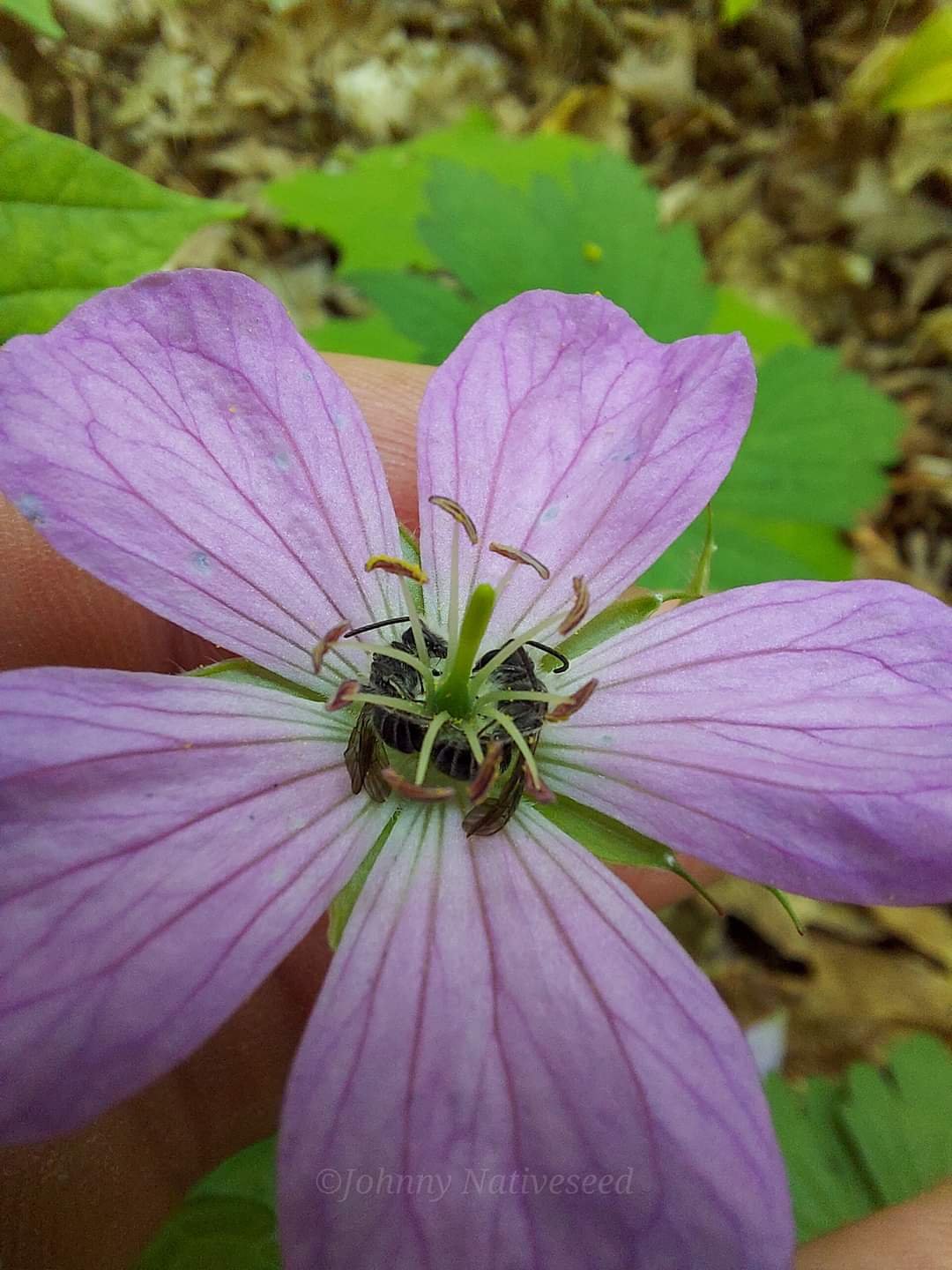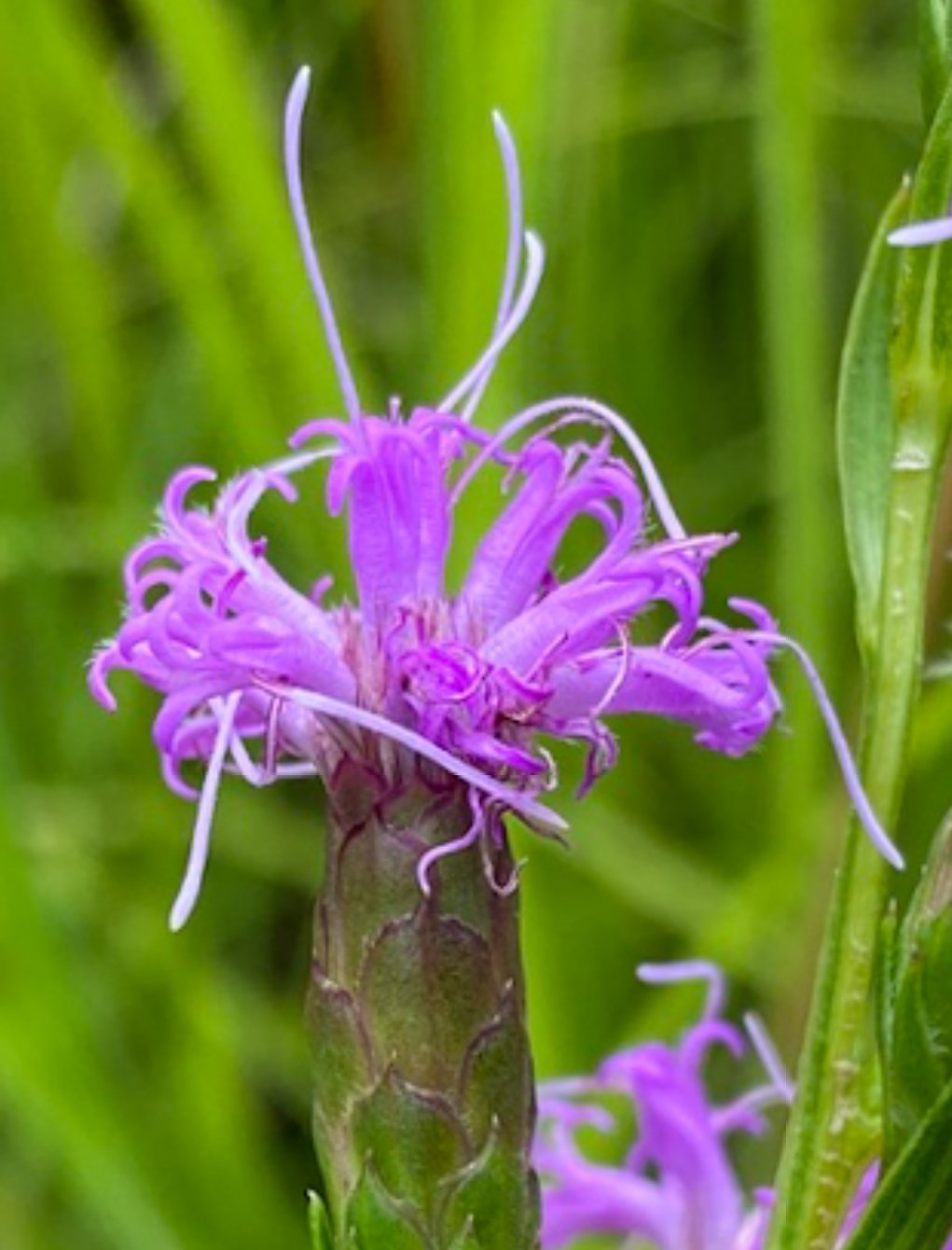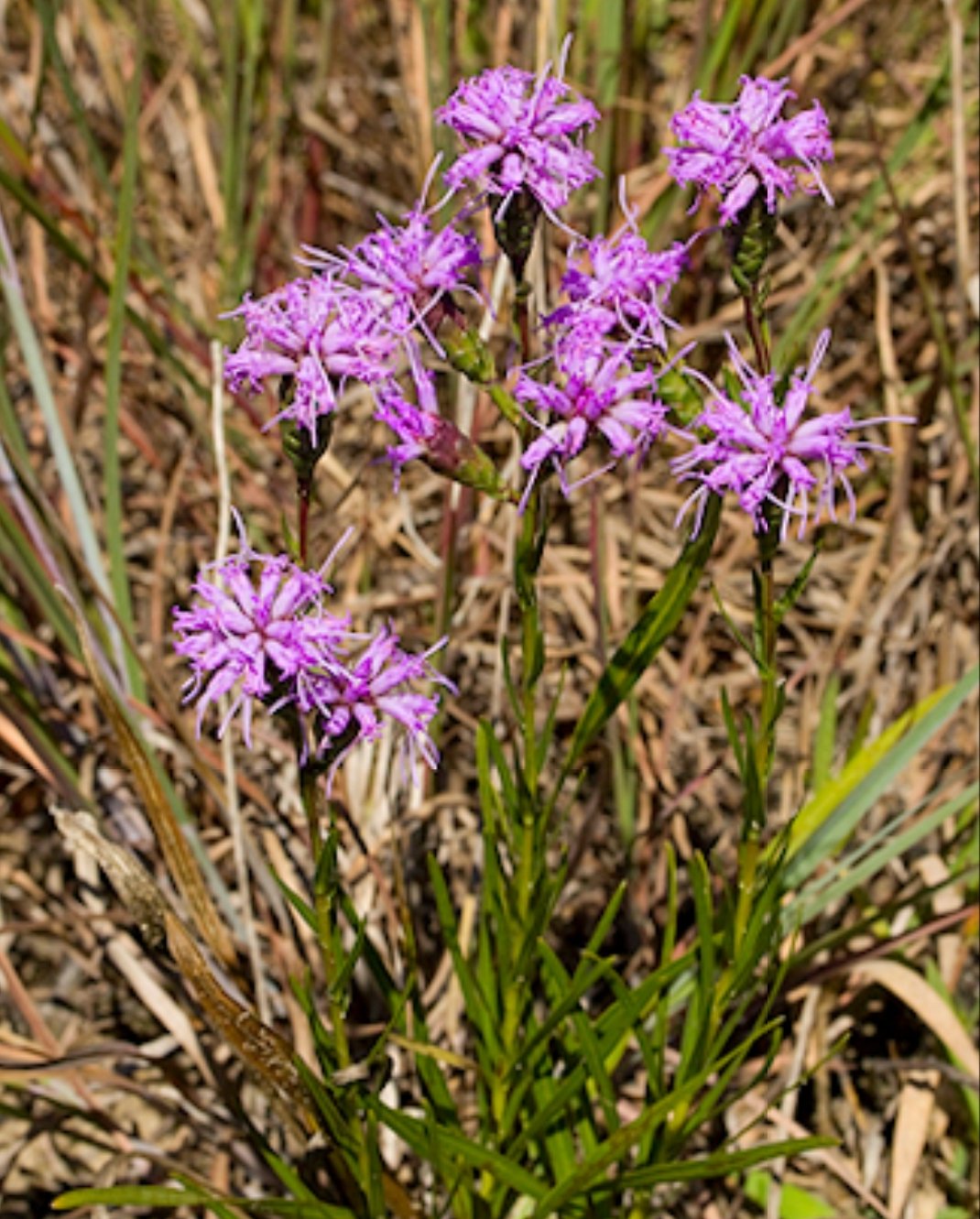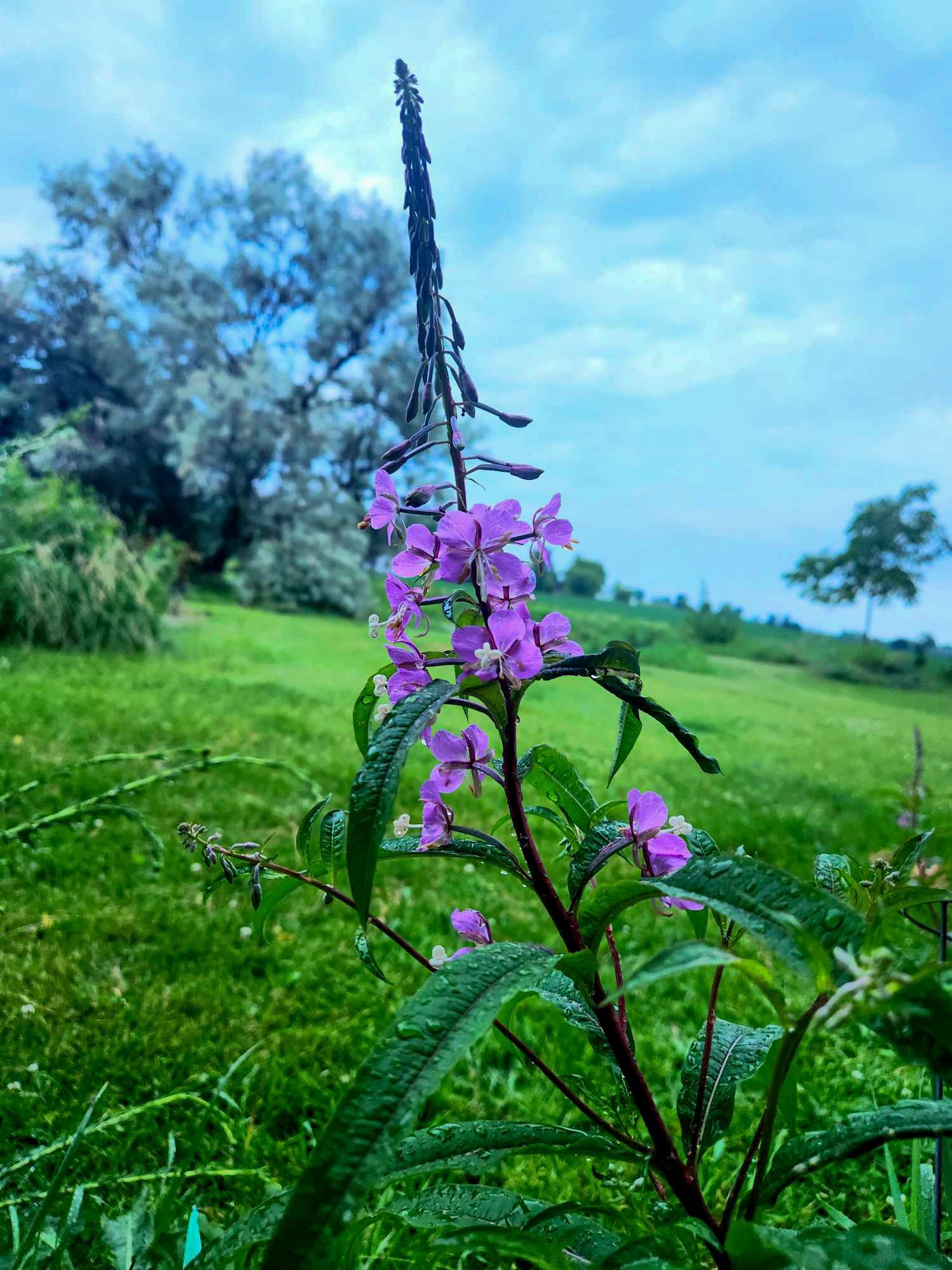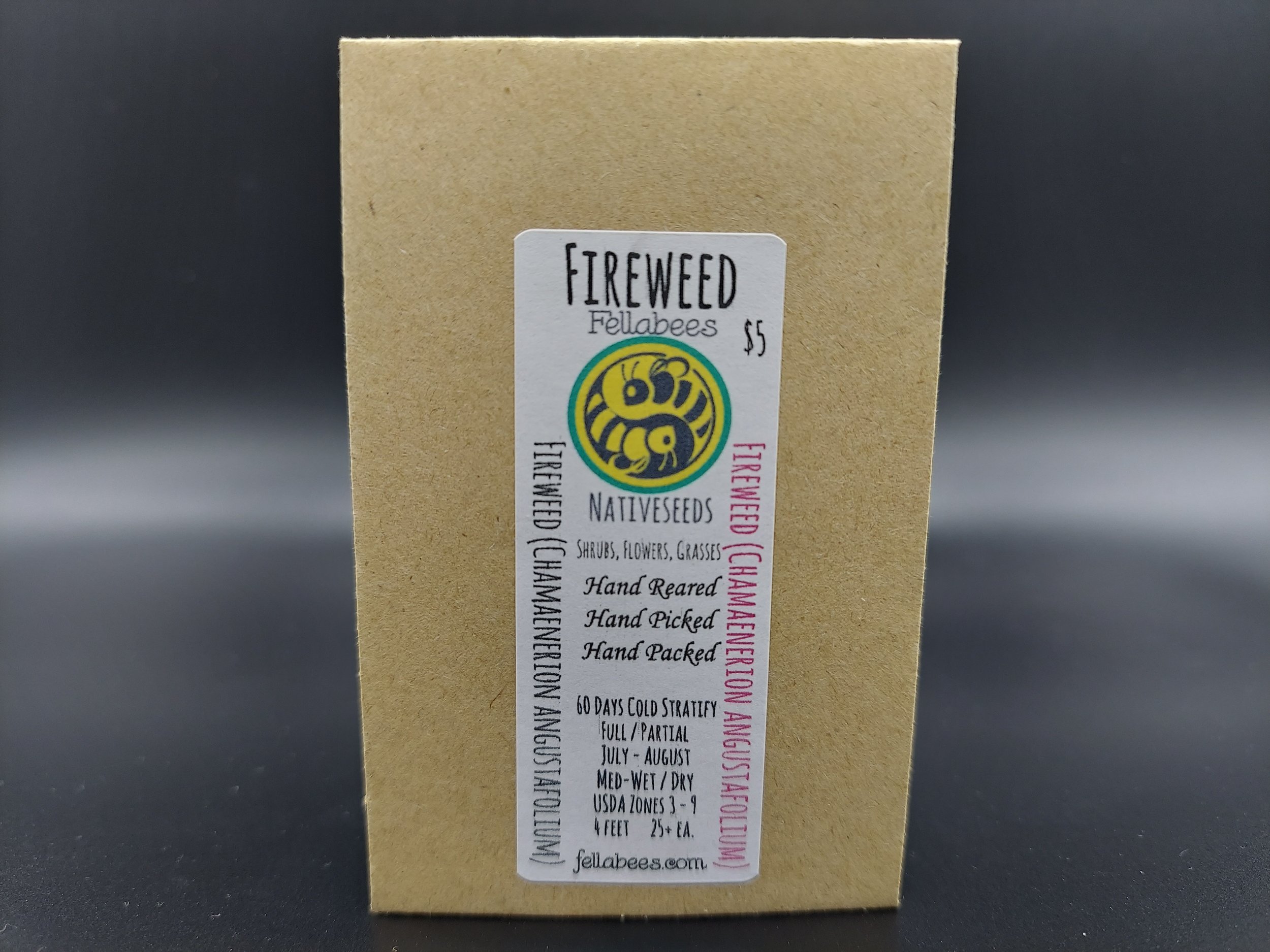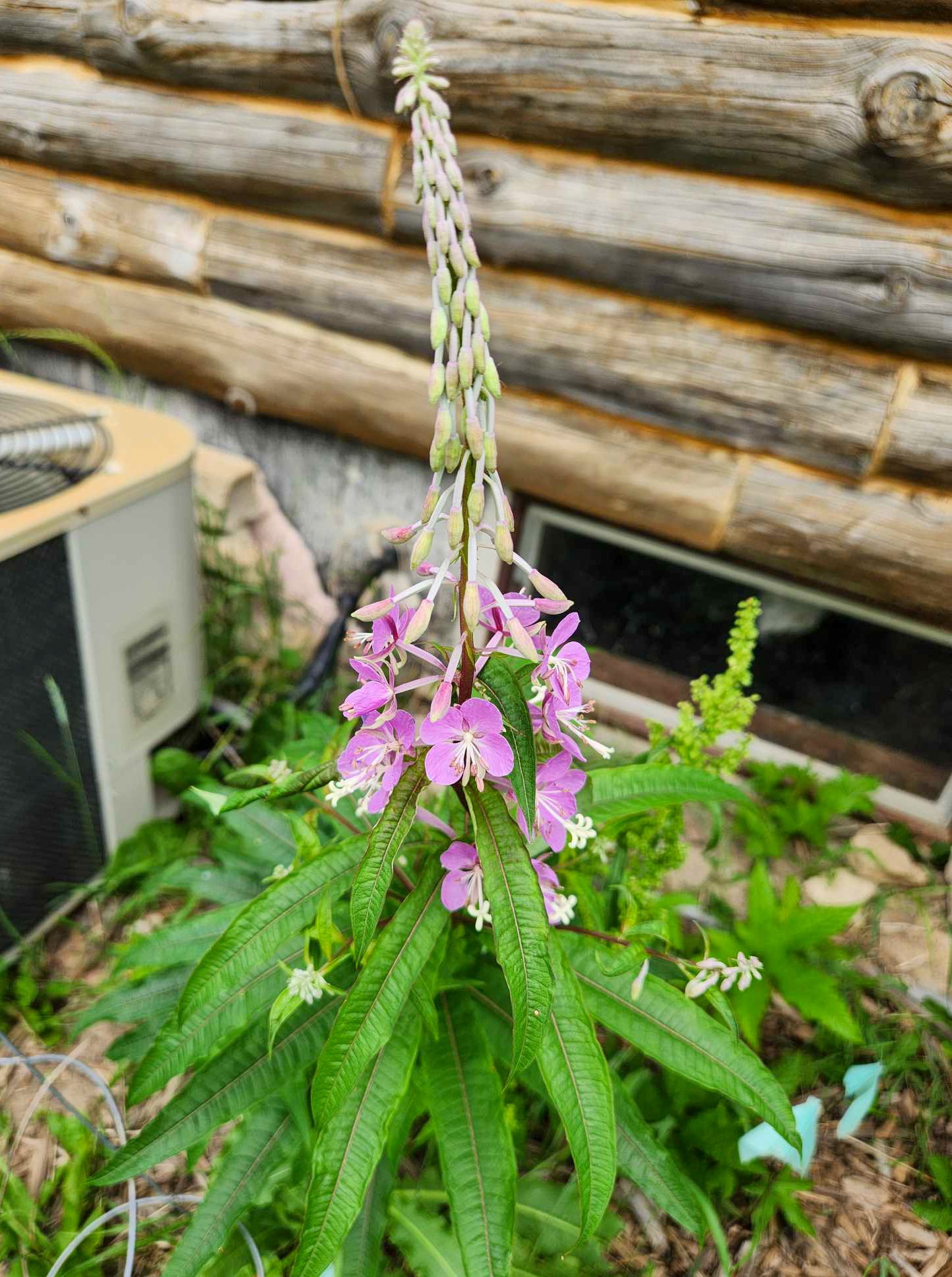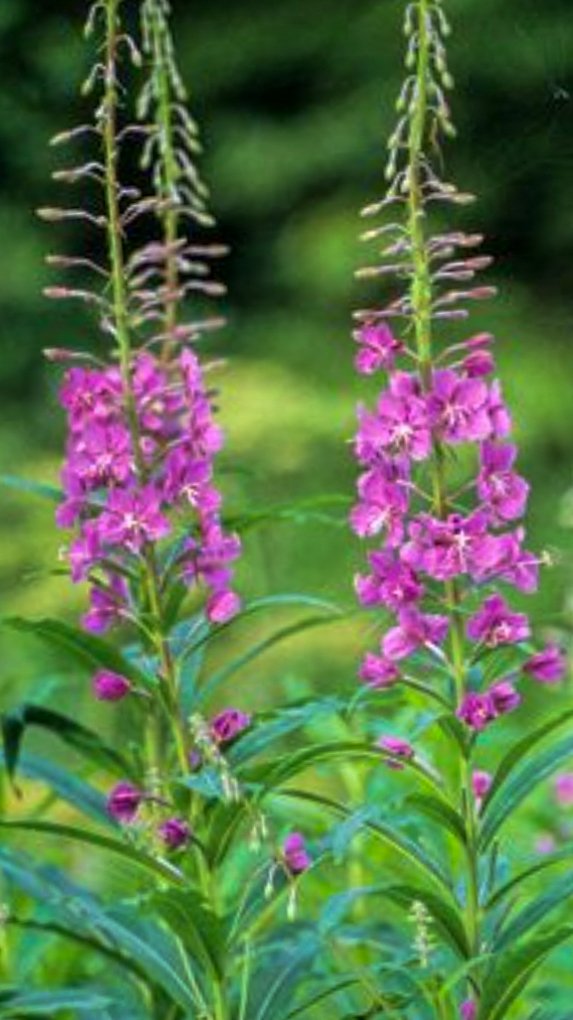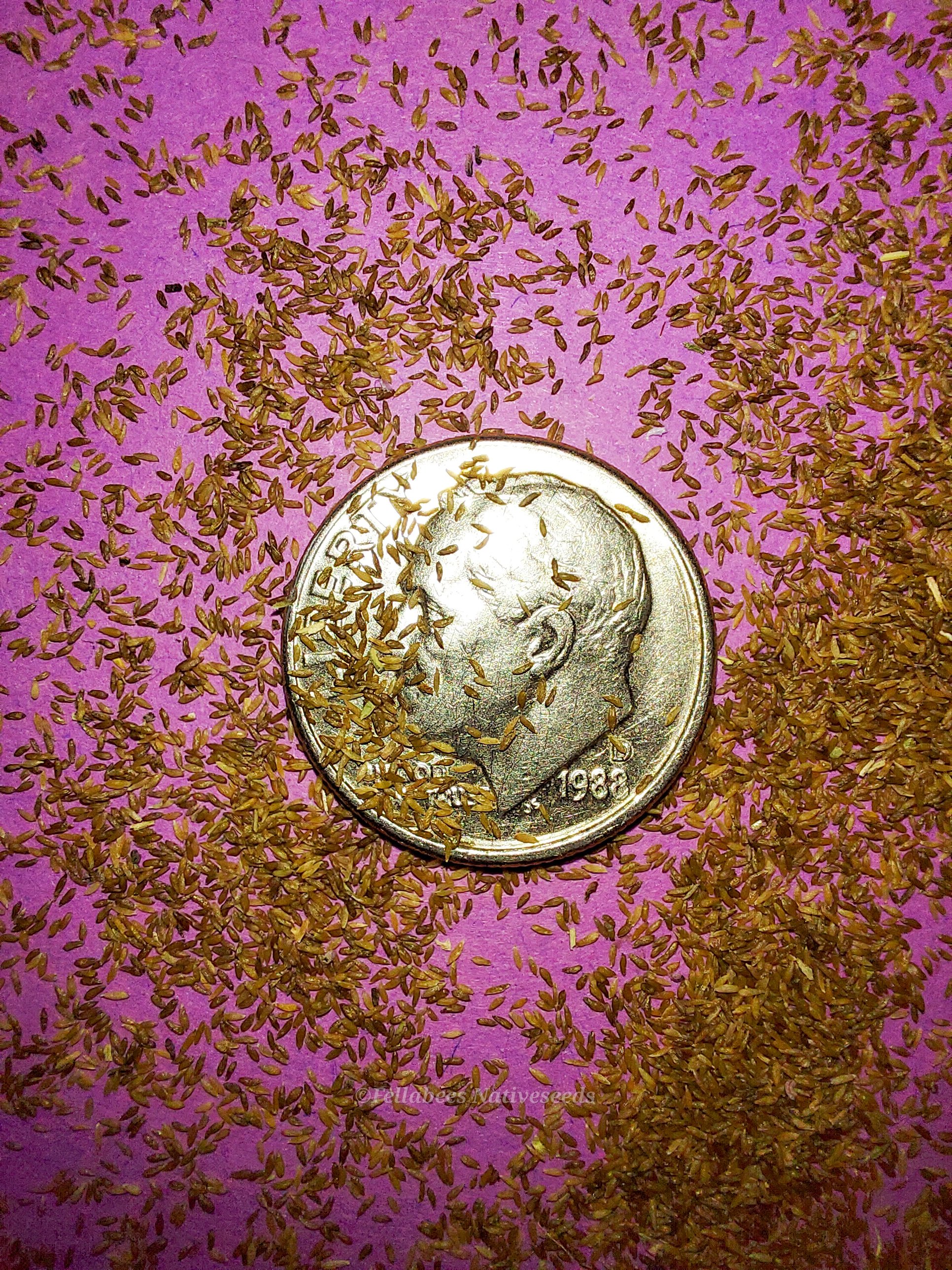 Image 1 of 6
Image 1 of 6

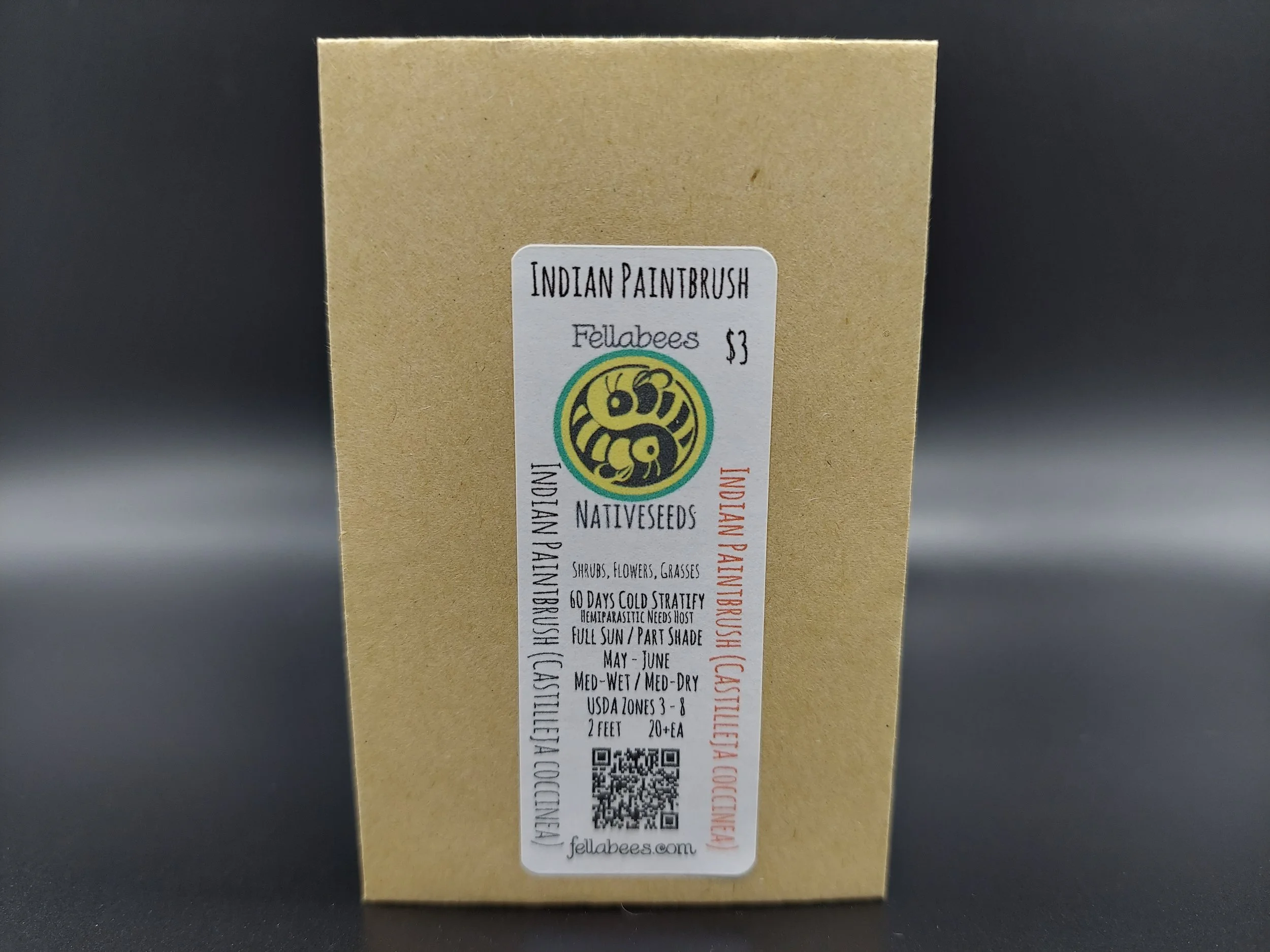 Image 2 of 6
Image 2 of 6

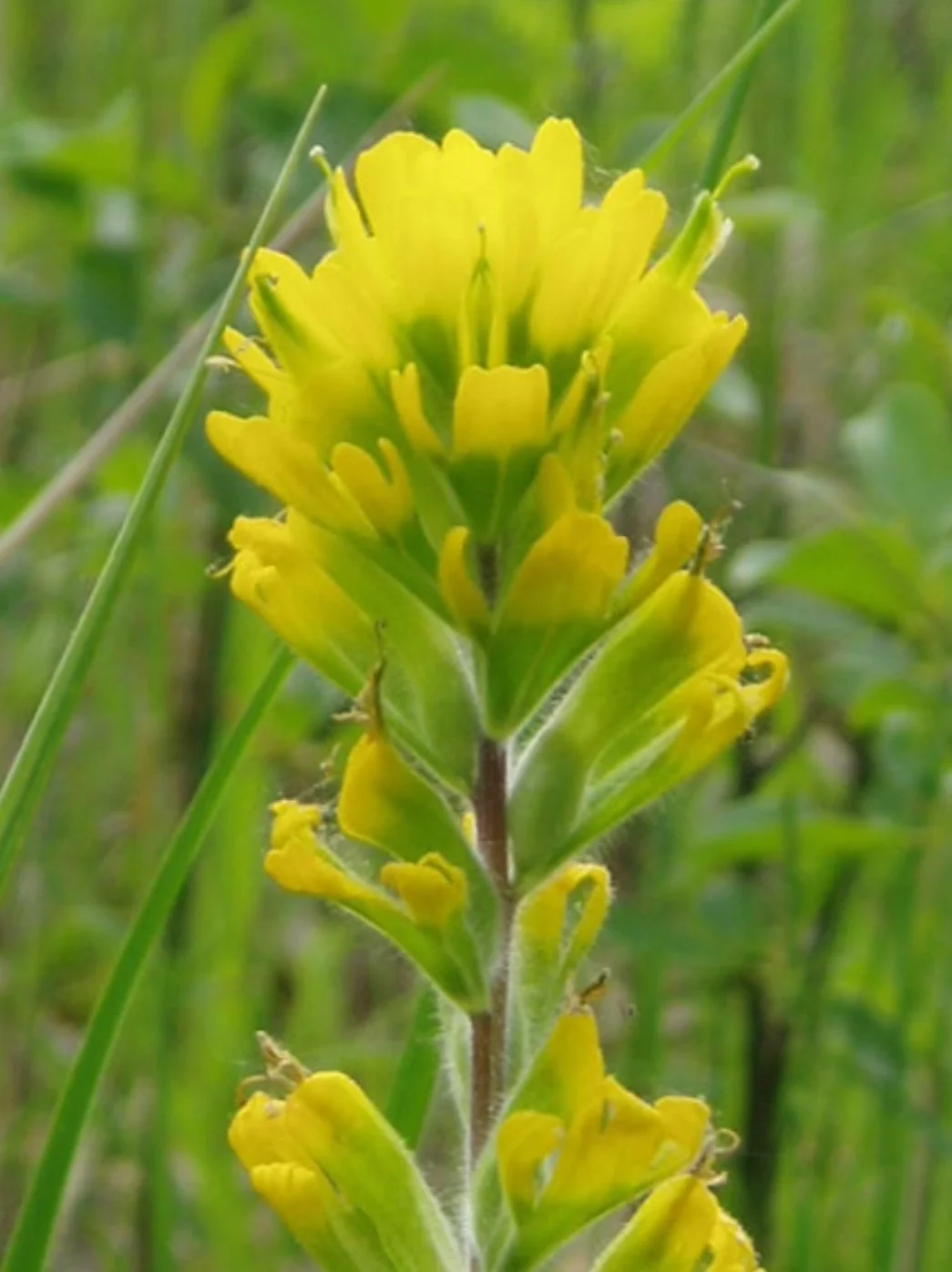 Image 3 of 6
Image 3 of 6

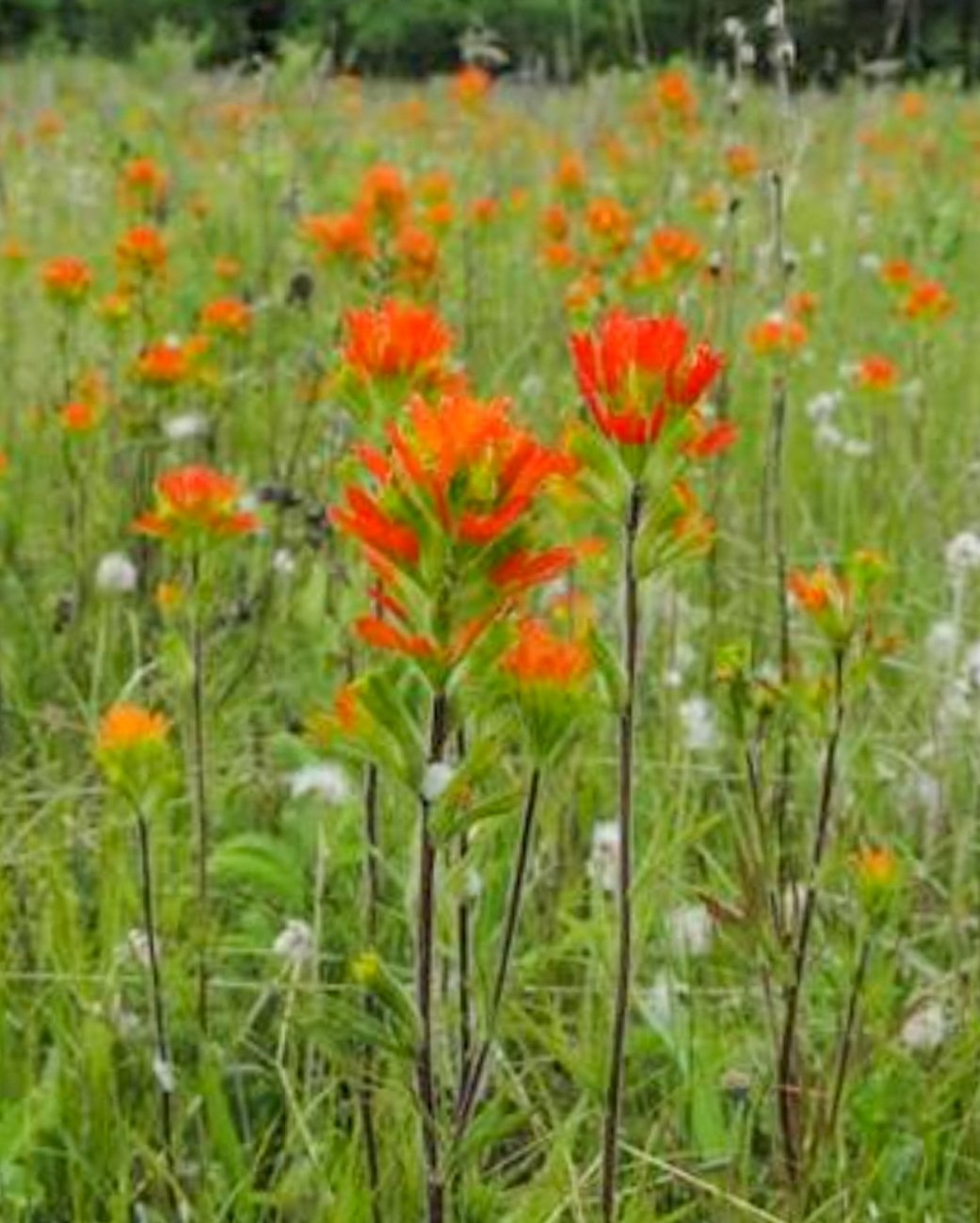 Image 4 of 6
Image 4 of 6

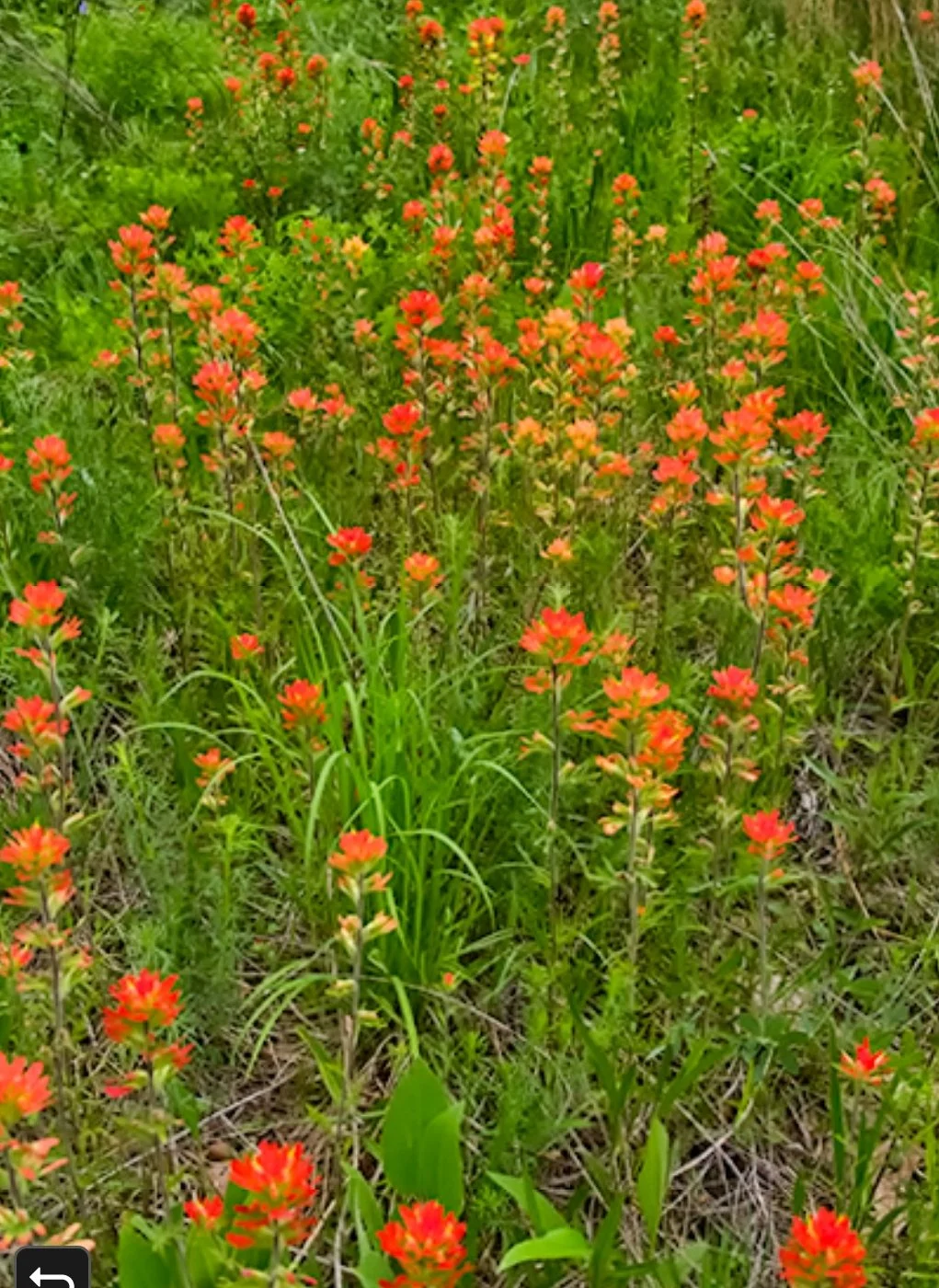 Image 5 of 6
Image 5 of 6

 Image 6 of 6
Image 6 of 6







Indian Paintbrush (Castilleja coccinea)
Indian Paintbrush (Castilleja coccinea)
Castilleja coccinea is the scientific name for the hemiparasitic native plant more commonly known as Indian Paintbrush, Scarlet Paintbrush, or Scarlet Painted-cup. This striking biennial flowering plant belongs to the Orobanchaceae family. It typically grows in a variety of natural habitats, including prairies, rocky glades, moist and open woodlands, thickets, and along the banks of streams throughout central and eastern North America.
Indian Paintbrush exhibits a fascinating display of color polymorphism, meaning that individual plants can be either bright yellow or vivid scarlet in color. This variation in color depends largely on the availability of pollinators such as bees within their environment. When pollinators are abundant, the scarlet-colored Indian Paintbrush tends to achieve a higher reproductive output, producing a greater number of seeds and fruits as a result. Conversely, when pollinators are scarce, the yellow-colored Indian Paintbrush often demonstrates increased reproductive success, ensuring that the species can continue to reproduce effectively in either scenario.
While Indian Paintbrush is capable of surviving independently, scientific studies reveal that the plant experiences up to a forty-fold increase in biomass growth when its roots parasitize those of another host plant to obtain additional nutrients. Additionally, Indian Paintbrush is primarily pollinated by ruby-throated hummingbirds, which play a crucial role in transferring pollen over long distances between typically small and scattered populations of this flower, thereby helping maintain genetic diversity and population stability.
A hemiparasitic plant connects its roots to the roots of nearby plants, usually grasses, in order to obtain essential nutrients. Suitable host plants for these hemiparasites are typically low-growing grasses and sedges, such as Blue Grama and June Grass, which provide the necessary support and resources. To encourage a successful connection between the hemiparasitic plant and its hosts, we recommend sowing the seeds of both species together in close proximity. This practice helps facilitate the conjoining of the two plants’ root systems, promoting healthy growth and nutrient exchange.
Plant Details:
USDA Zones: 3-8
Germination Needs: Needs 60 days Cold Stratification, Seed is very small needing light to germinate, surface sow and bottom water for best results. this species is Hemiparasitic meaning that it needs a host plant for best results. Sow with June Grass, or Blue Grama seed.
Life Cycle: Annual/Biennial
Sun Exposure: Full to Partial
Soil Moisture: Medium-Wet, Medium, Medium-Dry
Plant Spacing: 8-12 inches
Height: 2 feet
Bloom time: May, June
Bloom Color: Red or Yellow
Advantages:
Pollinator Favorite: butterflies, moths, bees, wasps, beetles
Bird Favorite: seeds, insects, fruit, nectar, nesting, perchs.
Deer Resistant: No
Native to: Wisconsin, Minnesota, Iowa, Illinois, Indiana, Michigan, Ohio, Pennsylvania, New York, New Hampshire, Maine, Massachusetts, Rhode Island, Connecticut, Delaware, Maryland, New Jersey, West Virginia, Virginia, Kentucky, Tennessee, North Carolina, South Carolina, Georgia, Alabama, Mississippi, Louisiana, Arkansas, Missouri, Texas, Oklahoma, Kansas, and North Dakota.
This plant is considered present but rare in several counties of the states Pennsylvania, New York, Connecticut, New Jersey, West Virginia, Virginia, Kentucky, South Carolina, Georgia, Alabama, Mississippi, Texas and North Dakota.
This plant is considered to be extirpated (locally extinct) in several counties of the states of Massachusetts, Rhode Island, Delaware, and Louisiana.
Seed Count: 20+
.
.
Packet quantities:
We pride ourselves on ethical, hands on, ecological management, using no mechanical or chemical methods whatsoever.
All of our native seed is hand reared, hand-picked, and hand packed from native prairies under our exclusive management, never breaking chain of custody from the field until it is sent to you. Each packet is hand prepared for shipment by us, directly.
Small seed species will contain greater than 20-25 seed
Large seed species will contain greater than 10-15 seed
All packets are individually marked at the bottom of the front label with expected count, however most if not all packets will have many more than the minimum count by default.
It is our mission to spread the wealth of native plant and pollinator ecological sustainability and educate back yard gardeners as well as corporate and government entities in how to germinate, grow, and benefit from native synergies.
Thank you for your support, it is because of you, that we can grow together to do, what we do. 🐛🦋🐝🐞🌾🌱🌼🧡
Indian Paintbrush (Castilleja coccinea)
Castilleja coccinea is the scientific name for the hemiparasitic native plant more commonly known as Indian Paintbrush, Scarlet Paintbrush, or Scarlet Painted-cup. This striking biennial flowering plant belongs to the Orobanchaceae family. It typically grows in a variety of natural habitats, including prairies, rocky glades, moist and open woodlands, thickets, and along the banks of streams throughout central and eastern North America.
Indian Paintbrush exhibits a fascinating display of color polymorphism, meaning that individual plants can be either bright yellow or vivid scarlet in color. This variation in color depends largely on the availability of pollinators such as bees within their environment. When pollinators are abundant, the scarlet-colored Indian Paintbrush tends to achieve a higher reproductive output, producing a greater number of seeds and fruits as a result. Conversely, when pollinators are scarce, the yellow-colored Indian Paintbrush often demonstrates increased reproductive success, ensuring that the species can continue to reproduce effectively in either scenario.
While Indian Paintbrush is capable of surviving independently, scientific studies reveal that the plant experiences up to a forty-fold increase in biomass growth when its roots parasitize those of another host plant to obtain additional nutrients. Additionally, Indian Paintbrush is primarily pollinated by ruby-throated hummingbirds, which play a crucial role in transferring pollen over long distances between typically small and scattered populations of this flower, thereby helping maintain genetic diversity and population stability.
A hemiparasitic plant connects its roots to the roots of nearby plants, usually grasses, in order to obtain essential nutrients. Suitable host plants for these hemiparasites are typically low-growing grasses and sedges, such as Blue Grama and June Grass, which provide the necessary support and resources. To encourage a successful connection between the hemiparasitic plant and its hosts, we recommend sowing the seeds of both species together in close proximity. This practice helps facilitate the conjoining of the two plants’ root systems, promoting healthy growth and nutrient exchange.
Plant Details:
USDA Zones: 3-8
Germination Needs: Needs 60 days Cold Stratification, Seed is very small needing light to germinate, surface sow and bottom water for best results. this species is Hemiparasitic meaning that it needs a host plant for best results. Sow with June Grass, or Blue Grama seed.
Life Cycle: Annual/Biennial
Sun Exposure: Full to Partial
Soil Moisture: Medium-Wet, Medium, Medium-Dry
Plant Spacing: 8-12 inches
Height: 2 feet
Bloom time: May, June
Bloom Color: Red or Yellow
Advantages:
Pollinator Favorite: butterflies, moths, bees, wasps, beetles
Bird Favorite: seeds, insects, fruit, nectar, nesting, perchs.
Deer Resistant: No
Native to: Wisconsin, Minnesota, Iowa, Illinois, Indiana, Michigan, Ohio, Pennsylvania, New York, New Hampshire, Maine, Massachusetts, Rhode Island, Connecticut, Delaware, Maryland, New Jersey, West Virginia, Virginia, Kentucky, Tennessee, North Carolina, South Carolina, Georgia, Alabama, Mississippi, Louisiana, Arkansas, Missouri, Texas, Oklahoma, Kansas, and North Dakota.
This plant is considered present but rare in several counties of the states Pennsylvania, New York, Connecticut, New Jersey, West Virginia, Virginia, Kentucky, South Carolina, Georgia, Alabama, Mississippi, Texas and North Dakota.
This plant is considered to be extirpated (locally extinct) in several counties of the states of Massachusetts, Rhode Island, Delaware, and Louisiana.
Seed Count: 20+
.
.
Packet quantities:
We pride ourselves on ethical, hands on, ecological management, using no mechanical or chemical methods whatsoever.
All of our native seed is hand reared, hand-picked, and hand packed from native prairies under our exclusive management, never breaking chain of custody from the field until it is sent to you. Each packet is hand prepared for shipment by us, directly.
Small seed species will contain greater than 20-25 seed
Large seed species will contain greater than 10-15 seed
All packets are individually marked at the bottom of the front label with expected count, however most if not all packets will have many more than the minimum count by default.
It is our mission to spread the wealth of native plant and pollinator ecological sustainability and educate back yard gardeners as well as corporate and government entities in how to germinate, grow, and benefit from native synergies.
Thank you for your support, it is because of you, that we can grow together to do, what we do. 🐛🦋🐝🐞🌾🌱🌼🧡
